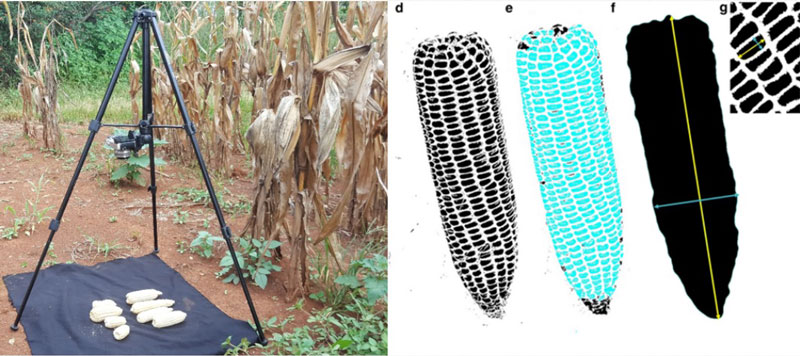Digital imaging tools make maize breeding much more efficient
To accelerate annual genetic gains under various stress conditions, maize breeders are looking at cost-effective ways to assess a larger number of maize plants and to collect more accurate data related to key plant characteristics like kernel number and size per ear, leaf angles or ear heights.

Measuring maize attributes such as ear size, kernel number and kernel weight is becoming faster and simpler through digital imaging technologies.
Recent innovations in digital imagery and sensors, packaged in what plant scientists call high-throughput phenotyping platforms, save money and time by replacing lengthy paper-based visual observations of crop trials with real-time big data collection and management.
Authors of a recent review study on high-throughput phenotyping tools observe that obtaining accurate and inexpensive estimates of genetic value of individuals is central to breeding. Under the Stress Tolerant Maize for Africa project, researchers like Mainassara Zaman-Allah use drone and create new digital tools, like the ear analyzer, for cheaper and faster plant selection. Drone cuts data collection costs by 25 to 75 percent compared to conventional methods. The ear analyzer allows to collect maize ear and kernel trait data 90 percent faster. This mobile app has been used by CIMMYT and the GOAL NGO to assess the extent of fall armyworm impact on maize crops yield in eastern Zimbabwe.
Read more about how STMA makes maize breeding faster and cheaper here
Tags: breeding tool, digital agriculture, maize breeding
Trackback from your site.
